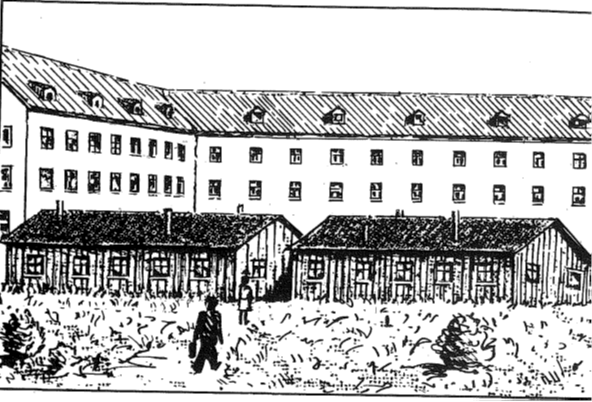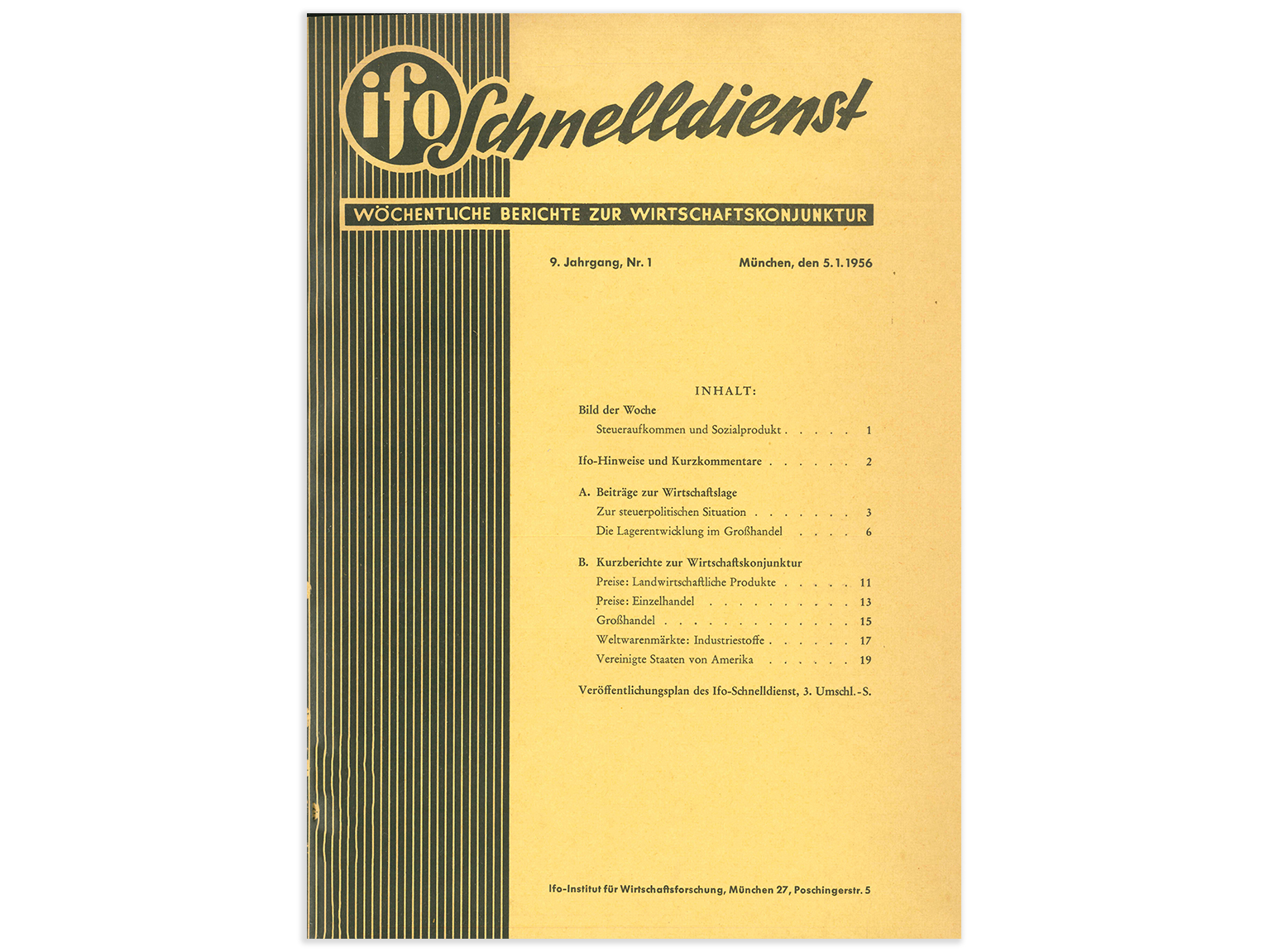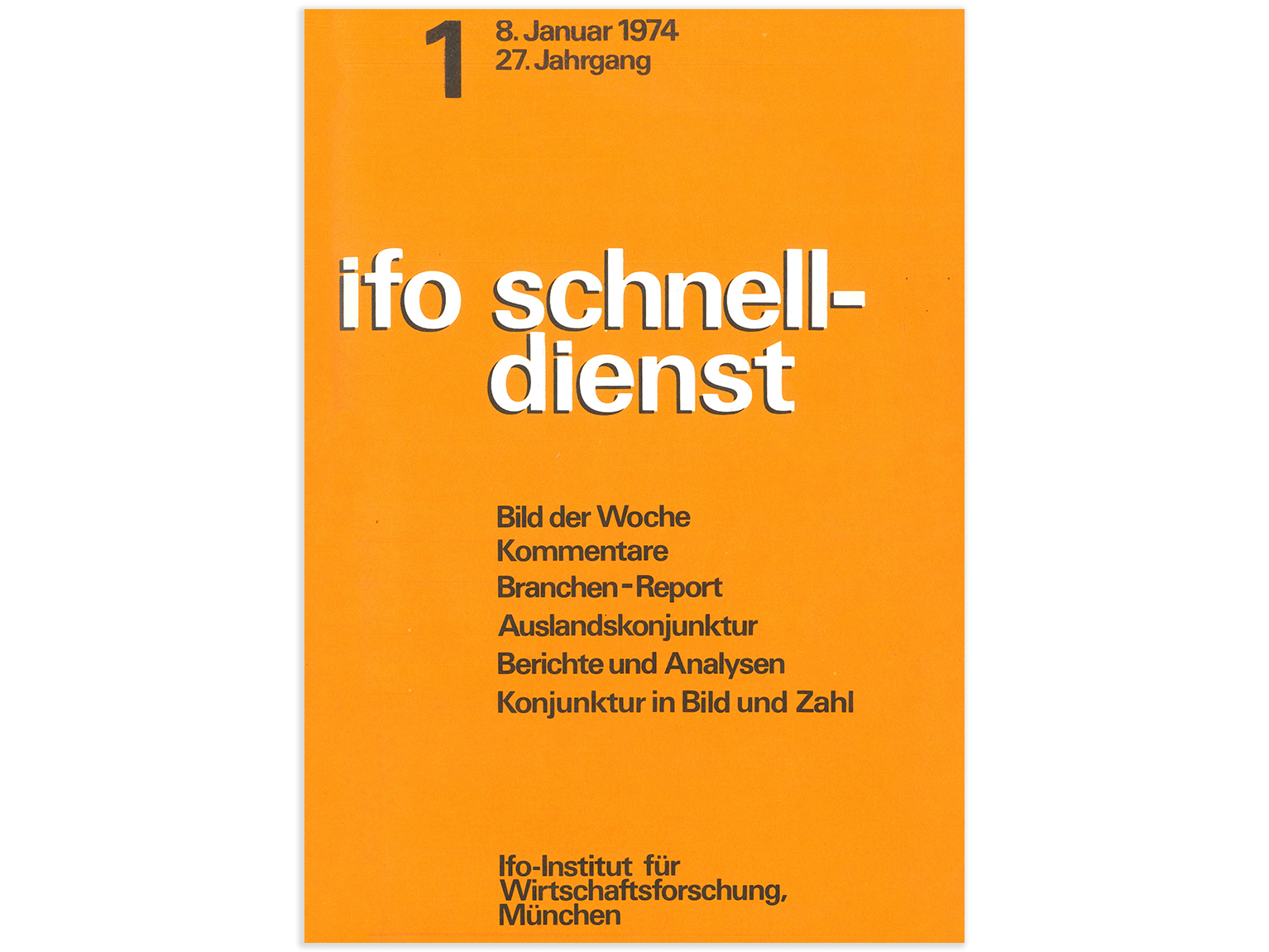Whether as an economic barometer, a scholarly beacon, or a platform for vigorous debates, the ifo Schnelldienst has spotlighted economic policy issues like few other publications in Germany. To this day, it remains a crucial component of the ifo Institute‘s public outreach.


The Early Days: From Manual Efforts to Institutional Influence
The first issue was published by the Information and Research Center for Economic Observation, part of the Bavarian Statistical State Office, housed in a police barracks on Rosenheimer Straße 130 in Munich. In January 1949, this center merged with the South German Institute for Economic Research to become the Institute for Economic Research in Munich, shortly known as ifo. The origins of ifo’s “Schnelldienst” magazine trace back to six months before the institute's official establishment. By July 1948, the staff were already manually producing the first editions of the magazine on a duplicating machine, page by page, marking its official publication date as July 20, 1948.
Engaging with Post-War Economic Dynamics
The inaugural issue delved into the economic aspirations and realities of the post-war era, including the results from the first representative survey of industrial companies. This began the ifo business surveys, which have since become a cornerstone of the institute’s research. The publication also speculated on the reasons behind the sudden availability of goods in retail – whether it was a temporary post-currency reform effect or an indicator of burgeoning prosperity.
Analyzing current challenges in politics and the economy is still the core of ifo Schnelldienst today – its range of topics has expanded in many directions.


Editorial Oversight and Expansion
The significance of the ifo Schnelldienst to the institute is evident from the fact that a board member, Eduard Werlé, took over as editor-in-chief. The ifo Schnelldienst was the institute’s most crucial public relations tool; since 1999, when the initially quarterly, and from 1974 monthly, Wirtschaftskonjunktur publication was discontinued, it has also been considered the institute's flagship publication. Initially, the ifo Schnelldienst was intended solely to present “the most important results of our work” to the press, for a fee.
From Duplicators to Digital: A Journey of Modernization
Originally, the ifo Schnelldienst supplemented issues of Wirtschaftskonjunktur, differentiating itself with the subtitle „Wöchentlicher Kurzbericht zur Wirtschaftskonjunktur“ (Weekly Brief Report on Economic Trends). Initially still produced via hand-operated duplicators, each edition quickly landed on the desks of business editors and all members of the ifo Association, including ministries, universities, companies, and associations. This made the ifo Schnelldienst one of the most important sources of economic information in Germany and internationally. The switch from a hand-operated duplicator to a more modern offset printing press did not occur until two years later, with the establishment of its own in-house print shop in 1952 marking a significant advancement in the publication‘s production capabilities.


A Platform for Influential Voices and Debates
By 1954, the editorial team had structured the ifo Schnelldienst into fixed sections, which included the picture of the week, ifo notes, short commentaries, and articles on the economic situation. Subscriptions were then opened to anyone interested in economic issues, cementing the publication‘s role as a key platform for economic discourse. It quickly became evident among the Institute‘s staff that those with valuable insights or data should aim to publish in the ifo Schnelldienst. Between 1970 and 1976, the publication featured an average of 136 articles per year from various ifo contributors.
This publication has not only documented key economic policy issues in the history of the Federal Republic of Germany, like the Hartz reforms, EU‘s eastward expansion, and the euro crisis, but also marked significant milestones in the institute’s own history. Notably, the ifo Business Climate Index, a key tool familiar to news and business journalists today, made its debut here – albeit inconspicuously with just a three-line table in the 1971 issue showing the index’s development from January 1970 to February 1971.
A New Era of Dialogue and Digital Presence
Remaining faithful to its mission until the late 1990s, the ifo Schnelldienst underwent a significant transformation as the institute redefined its publication strategy. It embraced contributions from external authors and introduced the “For discussion” section in 2020, enhancing the visibility of ifo researchers and aligning with the institute’s modern communication strategy. Since then, this section has focused on topics covered by the ifo Institute. That same year marked the digital launch of ifo Schnelldienst, allowing for more flexible and frequent publications.
This digital expansion enabled the ifo Schnelldienst to publish articles outside the traditional monthly publication schedule, thereby increasing its responsiveness to current economic events and debates.
Note: For the sources used in this text, click on the imprint.
